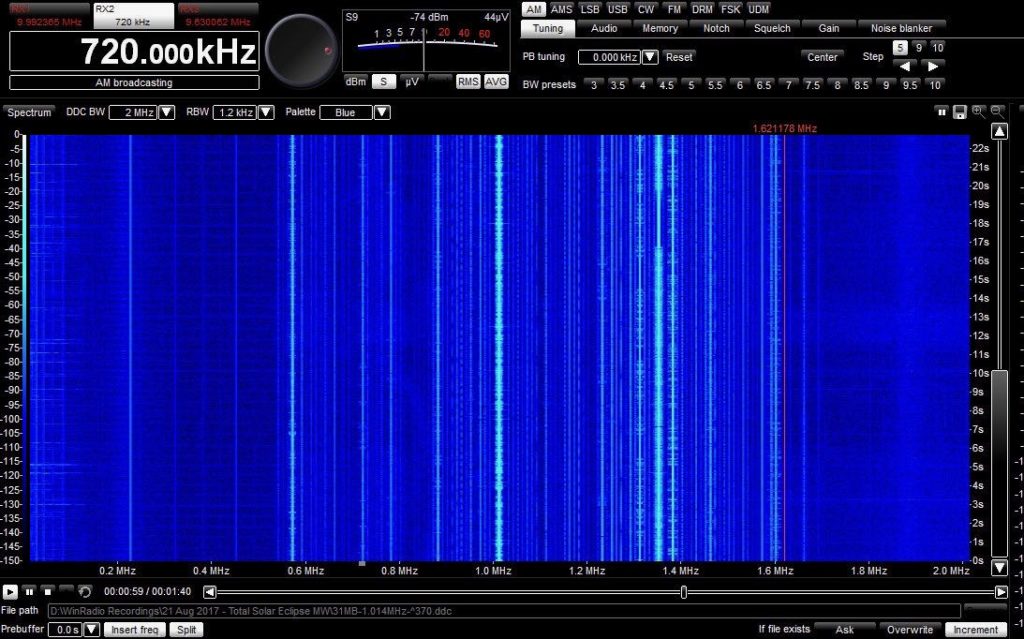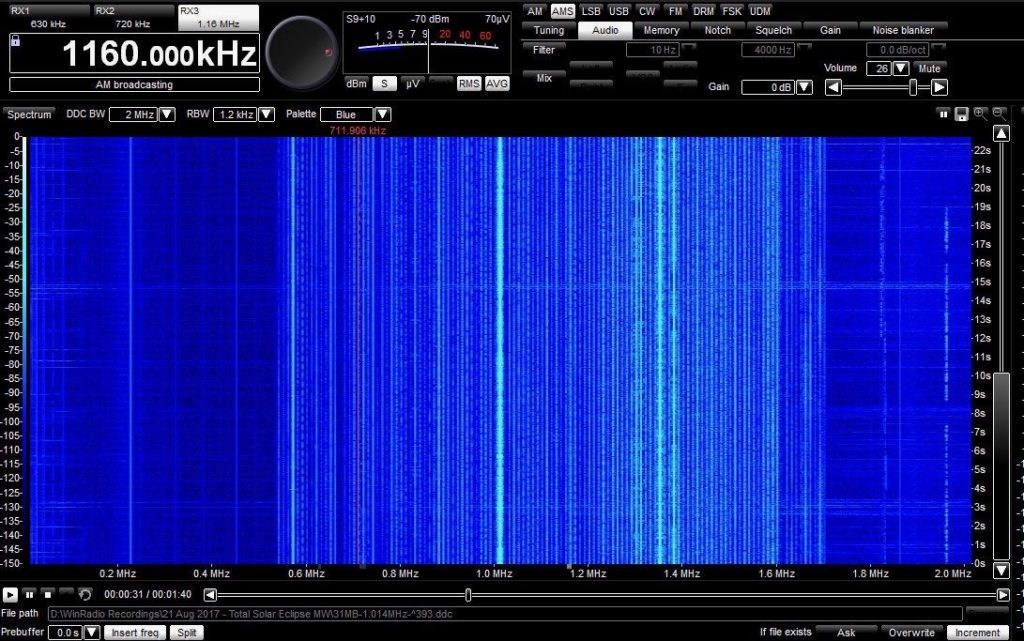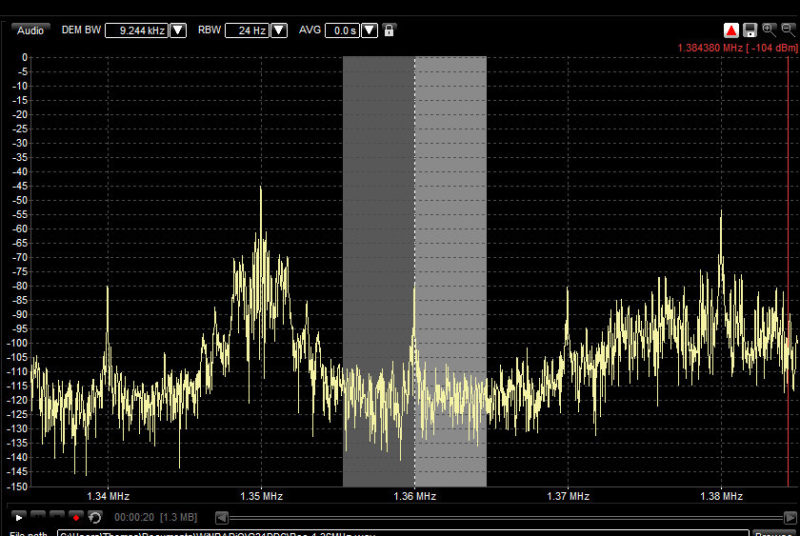Many thanks to SWLing Post contributor, Ivan Cholakov (NO2CW), who writes:
If you ever loved AM radio you will love this.
Thank you WNAH for recognizing there’s more to radio than plugging into a programming network and walking away!
Click here to view on YouTube.
Very cool! Many thanks, Ivan!
As I mentioned in a previous post, I recorded the entire mediumwave (AM broadcast) band from my North Carolina home with a WinRadio Excalibur on August 21 (day of the eclipse). After receiving Ivan’s message last night, I played back my recording and moved the time forward to around the moment of totality.
The mediumwave band was hopping! Several stations were competing for 1360 kHz with eclipse-enhanced propagation. There were two large signals flanking 1360 as well.
I thought I would never hear WNAH, but as I listened, their ID in CW (Morse Code) popped out of the signal mix. Here’s a short recording of the first station ID I received around 2:26 PM EDT (1826 UTC):
Click here to download the audio.
True: this is rough audio, but it always amazes me how CW can so effectively punch through noise. Nice touch, WNAH!
WNAH’s signal strength increased with time, but so did the competing signals on 1360 kHz. Within 10 minutes, about the time of totality in western North Carolina, WNAH was 40% stronger.
I did submit my recording and notes to WNAH last night.
Due to my schedule, I haven’t had any meaningful time to go over my eclipse spectrum recordings. Indeed, I think I’ll need several dedicated days to review them. While searching for WNAH’s signal, I could see a significant difference in propagation on the waterfall display within a 26 minute span of time:
14:15 EDT
 14:41 EDT
14:41 EDT
Note that local time of totality was 14:36 EDT.
I made spectrum recordings spanning 0-2 MHz, 6-8 MHz and 13.5-15 MHz.
Post readers: Did anyone else log WNAH? Log any other shortwave or mediumwave DX? Please comment!

